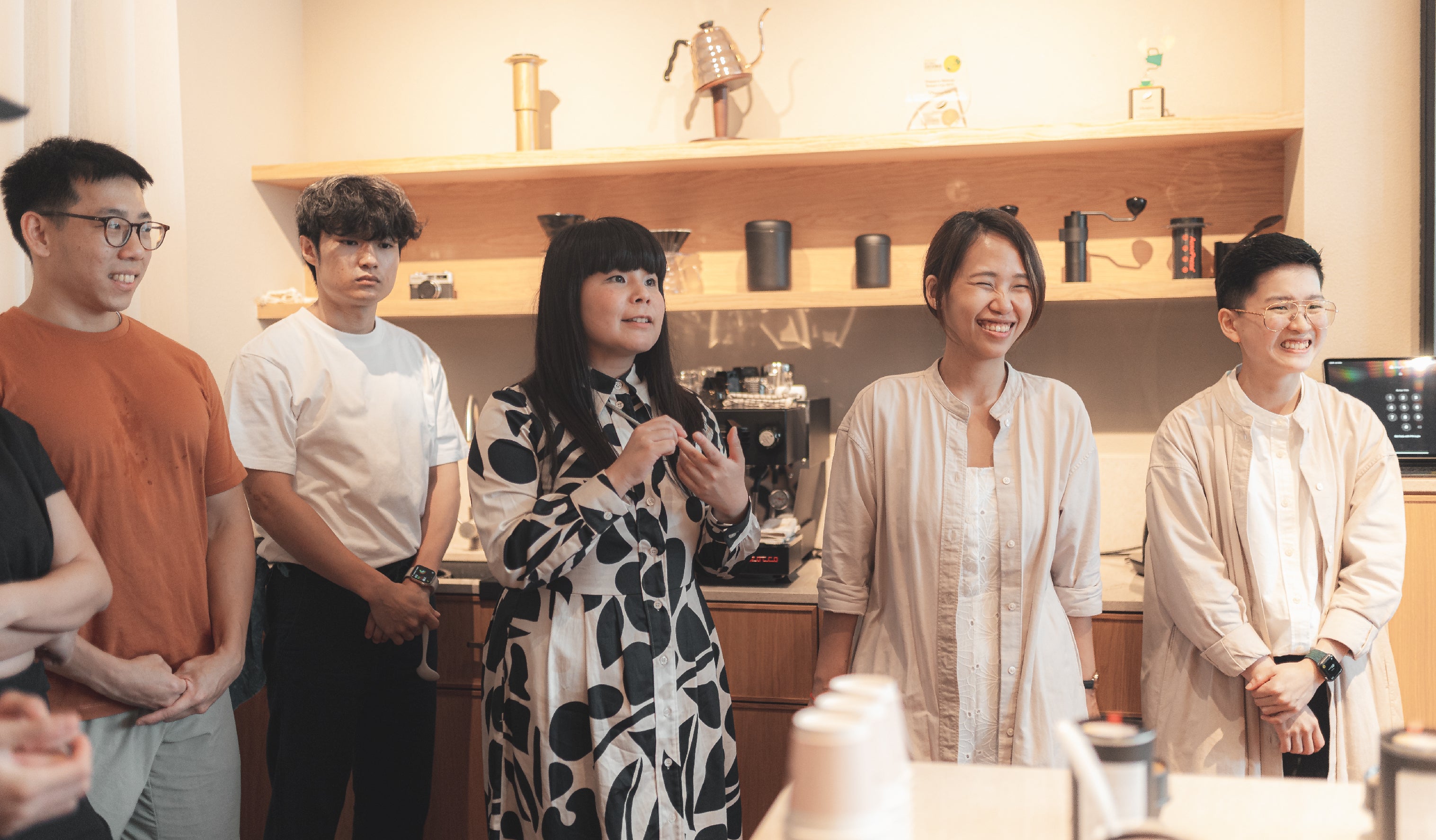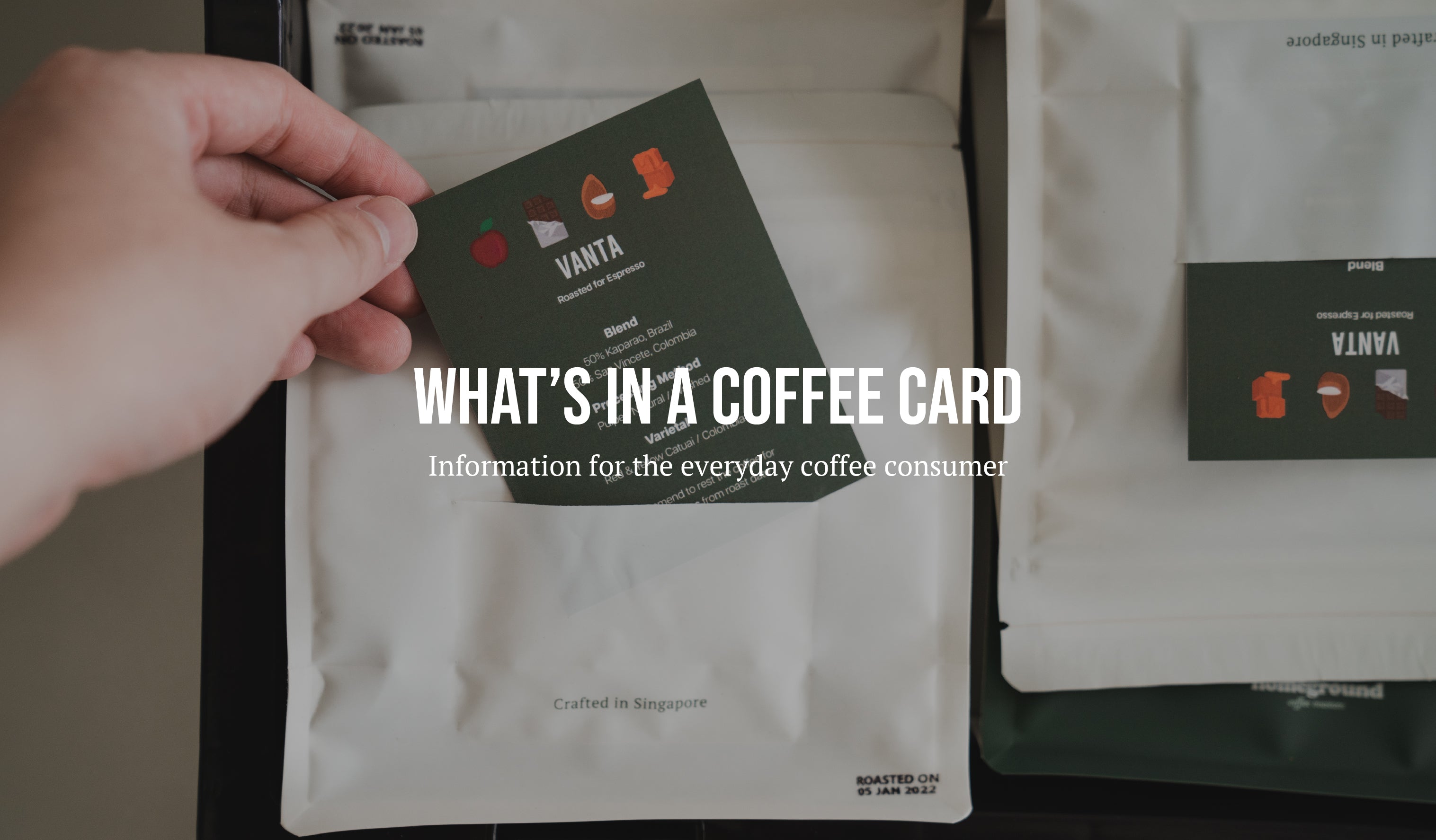A bag of specialty coffee from your local coffee roasters often comes with some information on the coffee that is being purchased, such as the geographical characteristics of the origin of the coffee, type of processing and varietal of the coffee beans, as well as the roast profile and tasting notes.
On the Homeground Coffee Roasters website, as well as in the coffee cards that come with each bag, we share more on the coffees that are roasted. Each detail conveys important information that sheds light on certain attributes of a coffee.
Country and Region
The recognition of the impact of the country and origin of a bag of coffee beans on a coffee’s taste began in the second wave of coffee, and today, it forms the foundation on which coffees are differentiated from one another.
Generally, coffees produced by different countries have distinctive differences in taste and diversity. Kenyan coffees are renowned for their vibrant acidity, while Indonesian coffees are characteristically bold in body, with a unique earthiness. From past coffee drinking experiences, if not anything else, it is an easy start for new coffee drinkers to recall the country of origin and some memorable aspects of a coffee.
While not always the case now with industry-wide innovation in coffee processing methods, an accumulated experience of drinking coffees sourced from all over the world can help to provide a prefatory understanding of the taste profile we should expect from the coffee produced.
Farm and Producer
With the third wave of coffee, more attention is starting to be placed on the coffee farm and producer. These are key factors that account for the quality of the coffee grown, more so than the origin. Positive farming practices, as well as meticulous and innovative coffee processing methods, allow coffee producers to consistently produce excellent coffee.
Where coffee beans were sold in bags labelled by the country of origin in the past, in specialty coffee, bags of coffee beans today are increasingly sold with the name of the farm or the producer as the focus.
When one drinks a good coffee, it is only instinctive to want to put a name to the experience, and recognition of the farm and the coffee producer can help to distinguish this coffee. As roasters and fellow coffee brewers, it pays to remember the name of the farms that produced the coffees we enjoy – that way, the decision to purchase is often a rather straightforward one the next time it comes around. In addition, it is a way to show appreciation for the coffee producers and their efforts in producing delicious coffees that we get to enjoy.
Varietal
While most of the specialty coffee world consumes Arabica coffee beans, there is a wide myriad of varieties within the Arabica species of coffee plants. Varieties like the Gesha are sought after for their delicate tea-like taste; the Bourbon for its rich combination of sweetness and body; and the Villa Sarchi for their hardy characteristics at high altitudes.
For coffee enthusiasts, knowing the varietal of the coffee allows one to anticipate the taste profile. Each varietal brings its own distinctive flair to the taste of the resultant cup, and this breadth of varieties allows us to enjoy a multitude of unique experiences as we drink coffees of each variety.
Altitude
Often represented in meters above sea level (masl), the altitude of a coffee farm is often tied closely to the density of the coffee beans that are grown. At higher altitudes, the harsher living conditions slow down the growth of the coffee plant, and the coffee plant focuses on ensuring successful reproduction by directing more resources towards its seeds. This tends to result in denser coffee beans that are more tightly packed with nutrients and sugars.
It is said that denser coffee beans possess comparatively complex and sweeter cup profiles, although many other factors also come into play into determining the final cup profile of a coffee.
Type of Roast
A bag of beans is usually labelled by the coffee roaster to be either for Espresso, Filter or both (Omni-roast). This denotes the recommended method to be used for brewing a bag of coffee beans.
While this is by no means a hard and fast rule, roasters often rely on their years of experience to roast coffees in different manners for both Filters and Espresso, or even to roast a coffee that can shine in both formats. It would be wise to first try to drink the coffee in the format that the roaster would have envisioned for it, to bring out the optimal flavours in the coffee bean.
Roasting Date
The date that a coffee was roasted plays an important role in the development of the taste of the beans. As time elapses, coffee beans undergo degassing, a process that affects the extraction and the taste of the coffee.
Contrary to the belief that the freshest coffee is always the best, we find that we prefer to rest our coffees for 14 days after the roast date before we start to brew a bag of beans.
For home brewers who may be concerned about freshness, the roast date can aid in prioritising and planning the bags of coffee beans that they have lying unopened at home, so that each bag reaches a relatively ideal rested state before it is taken out to be used.
Additional Information
Homeground Coffee Roasters’ coffee bags also provide additional information, such as the recommended brewing temperature, and brew ratio for each bag of coffee.
From our experience, it may be difficult to find a sweet spot for a coffee purely through trial and error. This additional information aims to help a home brewer to brew good coffee using our beans with greater ease, by forming a starting point from which one can calibrate from.
Tasting Notes
A collection of illustrative words that are used to describe the coffee, tasting notes describe the flavours of the coffee just as the roaster would experience it from cupping or brewing the coffee.
The increasing diversity in varietals and processing methods in today’s coffee industry means that the basic coffee information is no longer sufficient to convey the important message about a coffee: how it is expected to taste.
Instead of looking at the coffee details to inform oneself about a purchase, we recommend coffee drinkers to buy the coffees based on matching taste profiles to one’s own taste preferences, and then learn more about the coffee along the way.
It is the main reason behind the design of our coffee bags – with the tasting notes as the focus for each coffee.
Practically, tasting notes help one to benchmark the calibration for the brews made at home, to ensure that they are hitting the mark. They also serve as a form of positive reinforcement for home brewers to be able to put into words some of the flavours of the coffee, building experiences to elevate one’s ability to appreciate coffees over time.
Final Word
Sometimes, a bag of coffee that is bought may not come with the same detailed information as others that one might have bought before. This is only to be expected – given the numerous supply chains and sources of coffee across the world, not all coffee beans can be traced to the same extent of depth. Not having all the information at hand, however, does not stop one from enjoying a good cup of coffee.
Although, on the off chance that a bag of coffee you bought might come with details like the ones found above, this journal would have hopefully helped to distill the information at hand into useful and understandable knowledge, so that at the end of the day, we all continue to grow in our learning and love for the wonder that is coffee.
What's in a Coffee Card
Journal article by Homeground Coffee Roasters.
Journal Archive

Milk in World Barista Competitions
An overview of milk concentration methods in coffee competition, focusing on freezing techniques that enhance milk's qualities for great coffee beverages.

How Coffee Cup Colours Affect Your Drinking Experience
Cross-modal perception of colours on the taste of coffee

Learning to enjoy more

Same Coffees Everywhere, All at Once
Why do local specialty coffee shops serve the same coffees?

A study of unexpected coffee production nations

A low down on using puck screens for espresso machines


